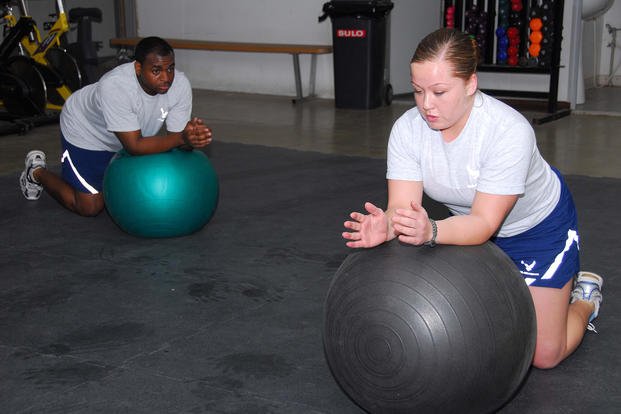Soldiers often contact me to update me on what they are doing for physical training. Their fitness training cycles usually vary a great deal from basic training to maintenance training while overseas or preparing to go overseas. Recently, in an Associated Press article that was featured at Today Online, many combat veterans are adding sprints, agility drills and core exercises to build a better-equipped combat soldier.
Short bursts of sprinting carrying combat loads of 50-75 pounds or more is often the daily requirement while on combat patrols. Preparing for that eventuality can be as simple as setting up some cones to run through with your gear or as complex as obstacle courses, like the USMC combat fitness test.
The USMC combat fitness test is the Marine Corps' answer to this growing need of combat-ready fighters. But if you are pre-training to join the military, here are some ideas for you to try to build a solid base of core strength, speed and agility before joining the military. Active-duty personnel seeking to create their own programs should consider adding these types of workouts into their regular PT programs as well.
Basic foundation of fitness: Your basic PT/run will cover this one. You still want to do your push-ups, sit-ups, pull-ups, dips and some form of cardiovascular fitness, like running, rucking, swimming, etc. If you neglect these, it is difficult to add the strength, speed and agility required in a combat setting. One of my favorite (more advanced) cardio/core/leg workout mixes is the Run/Leg PT:
Repeat 6-8 times (2-3 times per week)
- *Run or ruck a quarter-mile at goal pace
- **Squat 20
- Lunges 10/leg
- Flutter kicks 25
* Goal pace = pace you want for a two- to three-mile run; i.e., a 14-minute, two-mile run equals a seven-minute mile, a 3:30 half-mile and a 1:45 quarter-mile running pace. For rucks, always keep the pace between 12-15 minutes per mile with 50 pounds in a back pack
** Add weight using a backpack or dumbbells/kettlebell and swing the weight like chopping wood while you squat and lunge.
Wood chopper squat with dumbbell



Wood chopper lunges with dumbbell


Additional core workouts
As the wood choppers will work the core as well as your legs, one of the best core training devices I have ever used is the TRX suspension system. If that does not interest you, I would consider working the lower back and upper back with standard calisthenics exercises. See lower back plan (free). It works well to build a foundation on which to add more dynamic exercises like the above wood chopper squats and lunges and some of the Olympic lifts.
You want to build the core of the body horizontally and vertically. It is fine to do leg lifts and sit-ups for abs, but you also want to develop the torso through lifting and movement weights like you will be doing with 50- to 75-pound backpacks. By working your core (abs, lower back, upper back, chest/shoulders), you will help to build proper posture and alignment that will better carry you when running/patrolling with weight.
Agility drills
Besides doing 40- to 60-meter sprints, adding some sudden stops/starts into the running workout will help you build the speed/agility you need for your future training.
a) Illinois Agility Test. This is one of the most common in law enforcement circles and requires the students to run fast, stop quickly, change directions and move the body from a lying position to a running stride as quickly as possible. The course is 30 feet long and 15 feet wide. Place four cones 10 feet apart at the 7.5-foot line and the first and fourth cone at the zero and 30-foot line.

b) M drills. This is a simple use of cones 10-20 yards apart in the shape of an M. You can run this forward, backward, always looking in one direction as well as starting and stopping the test while in the prone position (on the ground).

c) T drill. This one is straight out of the NFL combine that measures agility and takes only a few seconds to accomplish. Always looking in the same direction, you can start on your back. Get up and run forward 10 yards, left side-step 5 yards, right side-step 10 yards, left side-step 5 yards to center, back-step 10 yards to start position.

These exercises/routines can be added easily to any workout to help build a faster soldier who is capable of moving with weight in and out of vehicles, around corners of buildings, or any other place to find cover/concealment.
Stew Smith is a former Navy SEAL and fitness author certified as a Strength and Conditioning Specialist (CSCS) with the National Strength and Conditioning Association. Visit his Fitness eBook store if you’re looking to start a workout program to create a healthy lifestyle. Send your fitness questions to stew@stewsmith.com.
Want to Learn More About Military Life?
Whether you're thinking of joining the military, looking for fitness and basic training tips, or keeping up with military life and benefits, Military.com has you covered. Subscribe to Military.com to have military news, updates and resources delivered directly to your inbox.


















